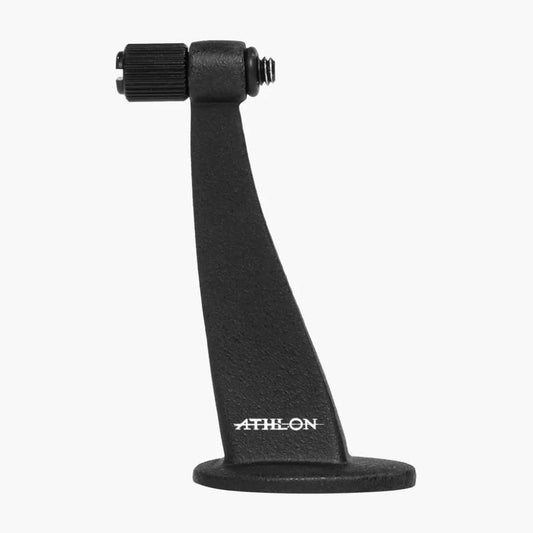

Athlon Binocular Tripod Adapter allows you to securely mount your binoculars to a standard camera tripod, providing a stable viewing platform for birdwatching, wildlife observation, and sports events. Constructed from high-quality aluminum, this adapter is lightweight yet durable, ensuring it can withstand outdoor conditions while remaining easy to carry. Weighing only 0.25 lbs and with compact dimensions of 3.5 x 2 x 0.5 inches, it fits conveniently in your backpack, making it an essential accessory for any outdoor enthusiast.
Universal compatibility with most binoculars means you can quickly enhance stability and comfort during long viewing sessions. The adapter features a standard 1/4″ threading for a secure attachment to your tripod, allowing for quick installation and setup. Whether you are hiking, birdwatching, or capturing nature photography, this tripod adapter ensures a vibration-free experience for clear and detailed images.
Features:
- STABLE VIEWING for crisp images without shake.
- LIGHTWEIGHT ALUMINUM for easy portability during adventures.
- UNIVERSAL COMPATIBILITY with most binoculars and tripods.
- QUICK INSTALLATION for fast setup when every second counts.
- DURABLE DESIGN that withstands outdoor conditions.
- 1/4″ THREADING for secure attachment to your tripod.
- ENHANCED STABILITY for long-duration viewing sessions.
- COMPACT SIZE for easy storage in your backpack.
Technical Specifications Table
| Material | Aluminum |
|---|---|
| Dimensions | 3.5 x 2 x 0.5 inches |
| Weight | 0.25 lbs |
| Thread Type | 1/4″ Standard |
What’s in the Box?
- Athlon Binocular Tripod Adapter
- Instructions Manual
Customer Reviews
"This adapter made my birdwatching trips so much better! No more shaky images!" - Sarah K.
"Super easy to set up, and it holds my binoculars perfectly. Highly recommend!" - Mark T.
FAQ
Can I use this adapter with any binoculars? Yes, it is compatible with most tripod-adaptable binoculars, providing versatile support.
How do I attach my binoculars? Simply screw the adapter onto your binoculars and then attach it to your tripod for a secure fit.
Is it lightweight? Absolutely! Weighing just 0.25 lbs, it is designed for portability without sacrificing durability.
Will it fit on all tripods? The adapter features standard 1/4″ threading, making it compatible with most tripods.
Can it handle rough outdoor conditions? Yes, the durable aluminum construction makes it suitable for various outdoor conditions.
Similar Models
Looking for the perfect binoculars to pair with your Athlon Binocular Tripod Adapter? Discover our extensive Athlon lineup, including models like Athlon Midas 10x42 for exceptional clarity and Athlon Argos 8x42 for budget-friendly performance. Explore our full collection for exceptional optics tailored to your adventures!
You May Also Like
Here’s some of our most similar products people are buying. Click to discover trending style.






